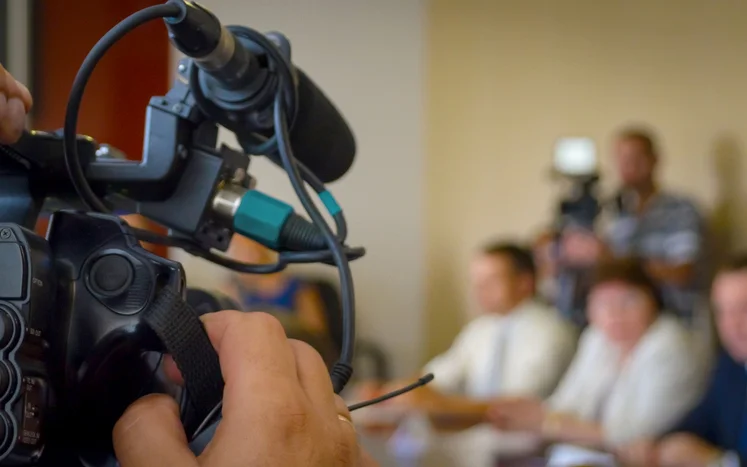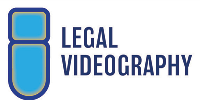Understanding the Significance of Videography in Legal Procedures
The combination of videography into lawful proceedings has emerged as a significant variable in the discussion and interpretation of proof. By capturing aesthetic elements such as body language and facial expressions, videography boosts the narrative surrounding witness testimonies and can exceptionally influence jury understandings.
Duty of Videography in Proof
Videography plays an increasingly vital function in legal procedures, acting as an effective medium for providing proof. The combination of video clip recordings into the legal structure permits a more vibrant representation of truths, allowing jurors and judges to visualize events as they took place. This visual documents can include a variety of products, consisting of monitoring video, tape-recorded witness statements, and specialist demos, all of which can dramatically boost the evidentiary landscape.
Among the main benefits of videography is its ability to capture nuances that may be lost in written accounts. Facial expressions, body movement, and situational context can supply essential understandings, aiding to communicate feelings and objectives that text alone can not. In addition, the use of video evidence promotes a much more engaging court experience, potentially aiding jurors in understanding complex situations.
As modern technology advances, the high quality and ease of access of videographic proof have enhanced, making it an essential component of modern lawful methods. Courts increasingly acknowledge the worth of video as a dependable source of information, motivating lawyers to adjust their methods for proof discussion. Eventually, videography offers not just to highlight realities yet also to boost the overall integrity of the judicial procedure.

Enhancing Reliability and Clearness
A considerable benefit of integrating videography in lawful procedures is its capacity to improve both reputation and quality of evidence offered in court. Videographic evidence can record nuances that written papers might forget, such as tone, body language, and context. This aesthetic representation permits juries and courts to much better comprehend the scenarios bordering the situation, therefore promoting an extra precise understanding of the events in question.

Additionally, the clarity afforded by videography decreases the chance of misconception that can occur from textual descriptions. This accuracy is especially critical in complex instances, where details can be quickly misconstrued. Ultimately, by offering evidence in an aesthetically easily accessible style, videography not only enhances the stability of the judicial process but also sustains informed decision-making by those involved in lawful proceedings.
Influence On Jury Assumption
The addition of videographic evidence significantly influences jury understanding, usually resulting in a lot more involved and notified considerations. Jurors are typically extra receptive to aesthetic details, which can improve their understanding of complex instances. Videography provides truths in a way that is both accessible and compelling, permitting jurors to get in touch with the evidence on a much more individual degree.
In addition, the ability to witness events as they happened can evoke emotional actions that created transcripts or verbal statements may fail to generate. This emotional interaction can lead jurors to form more powerful viewpoints pertaining to the reliability of witnesses and the general story of the situation. The graph of evidence also aids in making clear uncertainties, making it simpler for jurors to realize the context and relevance of the details offered.
Furthermore, videography can act as a powerful tool for narration, enabling lawyers to build a convincing story that reverberates with the jury. When jurors can envision circumstances and witness crucial minutes, their ability to deliberate thoughtfully and get to an educated decision is dramatically boosted, inevitably influencing the end result of lawful proceedings.
Ideal Practices for Legal Videography
Applying ideal techniques in legal videography is essential for making sure that her explanation visual proof is both reliable and credible in the court. First, select competent specialists who focus on lawful videography to make sure the technical high quality of the recordings. This includes using high-resolution cameras and professional sound tools to catch clear visuals and audio.
2nd, preserve proper paperwork throughout the recording procedure. This includes developing a comprehensive log that consists of timestamps, descriptions of the content, and the identifications of all individuals present. Such documents can strengthen the authenticity of the video clip.

Furthermore, take into consideration using ideal modifying techniques. While it is crucial to protect Going Here the initial content, small modifications for clearness-- such as enhancing audio degrees-- can boost the total presentation without changing the material.
Future Trends in Legal Videography
As legal videography remains to advance, emerging techniques and modern technologies are shaping the future landscape of visual proof in the court room (Legal Videography). One considerable trend is the combination of high-def and 4K video clip quality, enhancing the clarity and information of videotaped testaments and evidence. This enhanced resolution aids jurors in adequately reviewing the integrity of witnesses and the nuances of today materials
Furthermore, the usage of expert system (AI) in video clip analysis is obtaining traction. AI devices can help in recognizing crucial moments in footage, creating transcripts, and also evaluating non-verbal interaction, which gives deeper insights right into witness reputation. Online reality (VIRTUAL REALITY) and enhanced fact (AR) are poised to reinvent just how evidence is presented, permitting jurors to submerse themselves in criminal activity scenes or scenarios, thereby promoting a more profound understanding of the context.
Conclusion
In summary, videography acts as an essential device in legal process, boosting the discussion of proof and enriching the overall understanding of situations. By capturing non-verbal signs and boosting check here the reliability of witness accounts, videography significantly affects jury perception and decision-making procedures - Legal Videography. Adhering to ideal techniques makes certain the performance of lawful videography, while emerging fads promise to more boost its role in the judicial system, ultimately cultivating an extra informed and engaged legal setting
Videography plays a progressively crucial function in legal proceedings, serving as an effective tool for presenting proof.A significant benefit of including videography in legal process is its capability to improve both integrity and clarity of evidence provided in court. Eventually, by offering proof in an aesthetically obtainable layout, videography not only reinforces the stability of the judicial process however also supports enlightened decision-making by those entailed in legal proceedings.
In recap, videography serves as an important device in legal proceedings, enhancing the presentation of proof and improving the overall understanding of situations. Legal Videography. Sticking to best techniques makes certain the efficiency of lawful videography, while emerging fads assure to more enhance its role in the judicial system, ultimately cultivating an extra educated and engaged legal environment